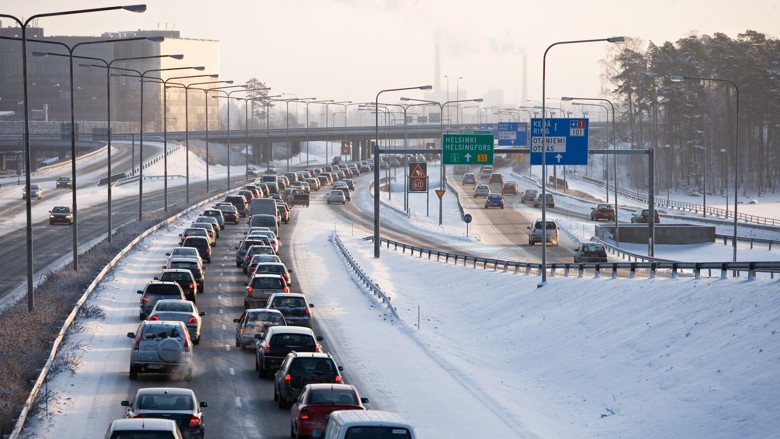Air quality zones

The health effects of traffic emissions can be reduced by applying air quality zones in urban planning. Street dust, exhaust fumes and noise cause health effects when residing in an area affected by busy routes. The concentrations of air pollutants fall rapidly when moving further away from the road and are at background levels at a distance of 200–300 meters. There is no known threshold value for the health effects caused by particles, so every metre further away from a route is important.
Minimum and recommended distances for housing and sensitive locations
The air quality zones defined by HSY and the Finnish Institute for Health and Welfare aim to reduce the health effects of fine particles and other traffic emissions in the Helsinki metropolitan area. The goal of air quality zones is to ensure a healthy and safe living environment. Air quality zones are used in the planning of new residential areas and complementary construction in the vicinity of open streets and routes in the Helsinki metropolitan area. Minimum and recommended distances define the zones closer than which it is not recommended to have housing or sensitive locations, such as kindergartens and primary schools. At special sites, such as intersections, tunnel entrances and poorly ventilated areas, it is necessary to assess the effects of air pollutants more closely. Air quality zones are not suitable for dense city centres. Other planning methods may be used in those areas to reduce exposure.
It is recommended that the recommended distance be applied when planning new areas. The minimum distance is recommended for complementary construction. The distance is given in metres from the edge of the road to the façade of the building or to the edge of the occupied zones. The traffic volume is a forecast of the amount of traffic per weekday. As a rule, a new area refers to a large area without previous housing.
| Vehicles per weekday | Residential buildings, minimum distance (m) | Residential buildings, recommended distance (m) | Sensitive location, minimum distance (m) | Sensitive location, recommended distance (m) |
| 5,000 | 10 | 10 | 20 | |
| 10,000 | 7 | 20 | 20 | 40 |
| 20,000 | 14 | 40 | 40 | 80 |
| 30,000 | 21 | 60 | 60 | 120 |
| 40,000 | 28 | 80 | 80 | 160 |
| 50,000 | 35 | 100 | 100 | 200 |
| 60,000 | 42 | 120 | 120 | 200 |
| 70,000 | 49 | 140 | 140 | 200 |
| 80,000 | 56 | 150 | 150 | 200 |
| 90,000 | 63 | 150 | 150 | 200 |
| 100,000 | 70 | 150 | 150 | 200 |
In the dense downtown area, it is generally not possible to comply with minimum and recommended distances in complementary construction. In this case, traffic planning, block solutions, architectural solutions and other methods must be used to improve the site’s air quality and reduce residents’ exposure to air pollutants. Exposure to noise must also be considered in conjunction with air quality.
Tool for air quality assessment
Air quality zones are a means of assessing the suitability of areas near roads or streets for housing and the placement of other functions, such as schools and care facilities, in an open environment. If the planned site is at the recommended distance or further away from the street or road, traffic emissions are unlikely to cause air quality problems. If the planned site is closer than the recommended distance, air quality problems are possible. The effects of air quality should be assessed more closely at the planned site if the limit or guideline values are estimated to be exceeded. See the methods for assessing the air quality situation in Chapter 3 of the guide for air quality in land use planning (‘Ilmanlaatu maankäytön suunnittelussa’, in Finnish).